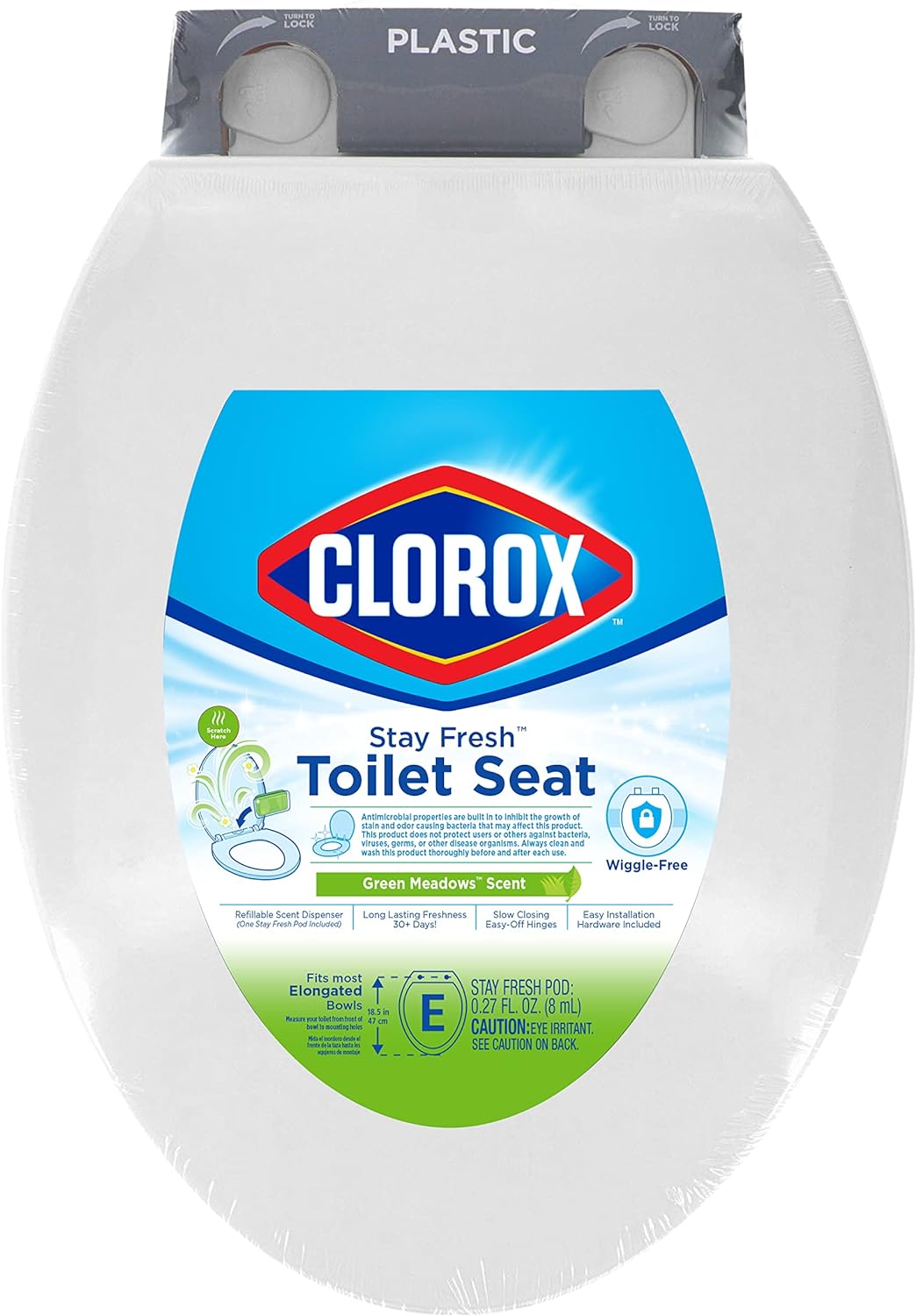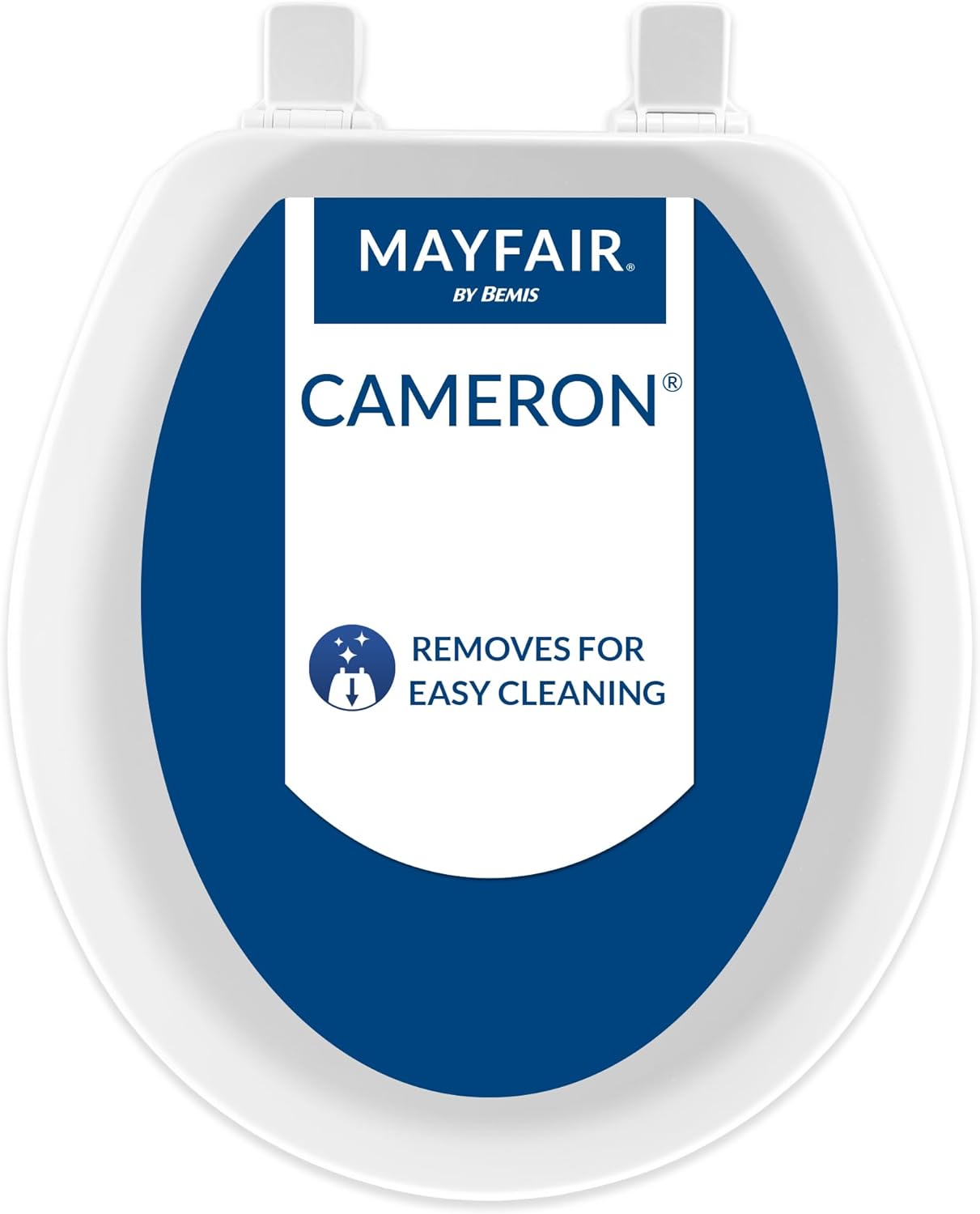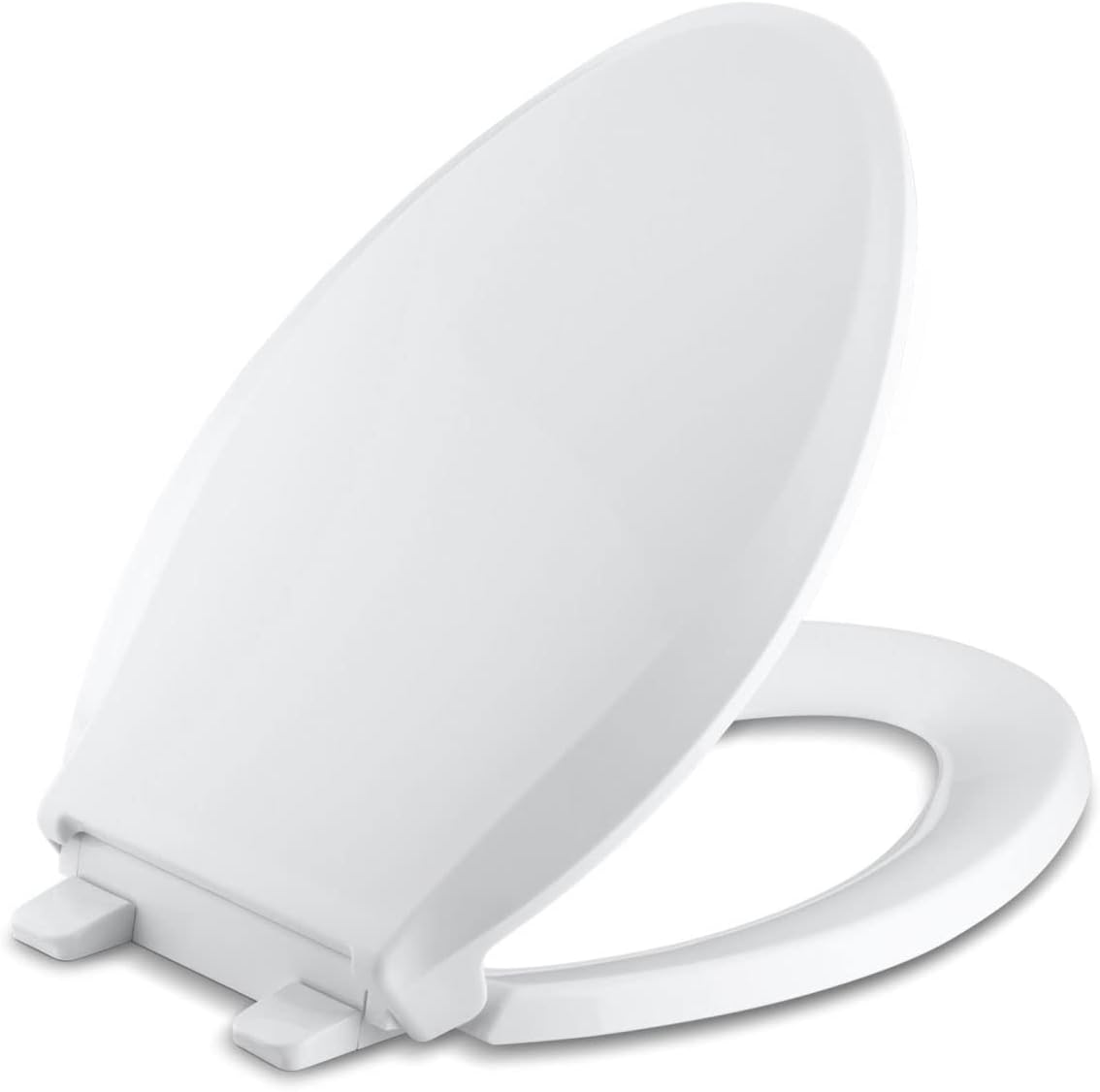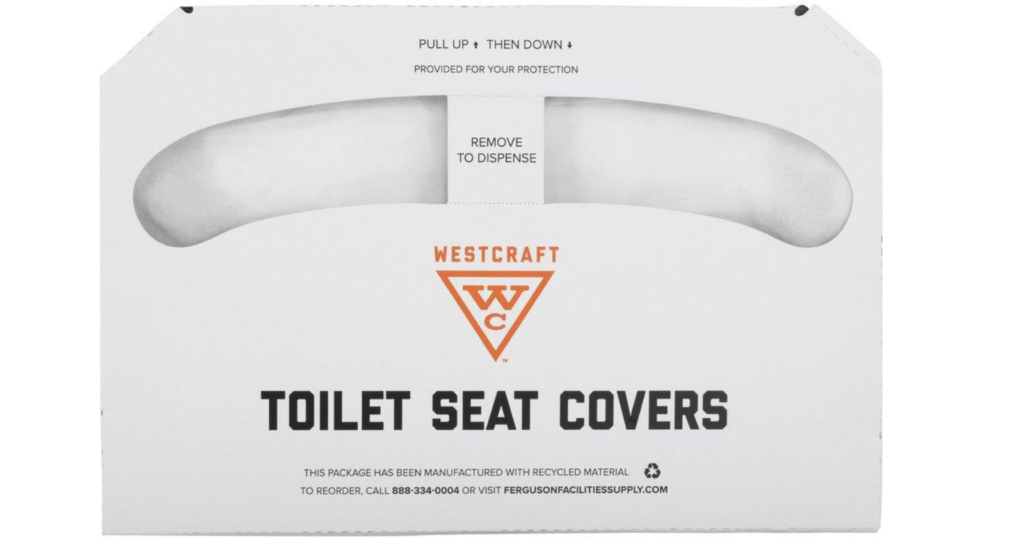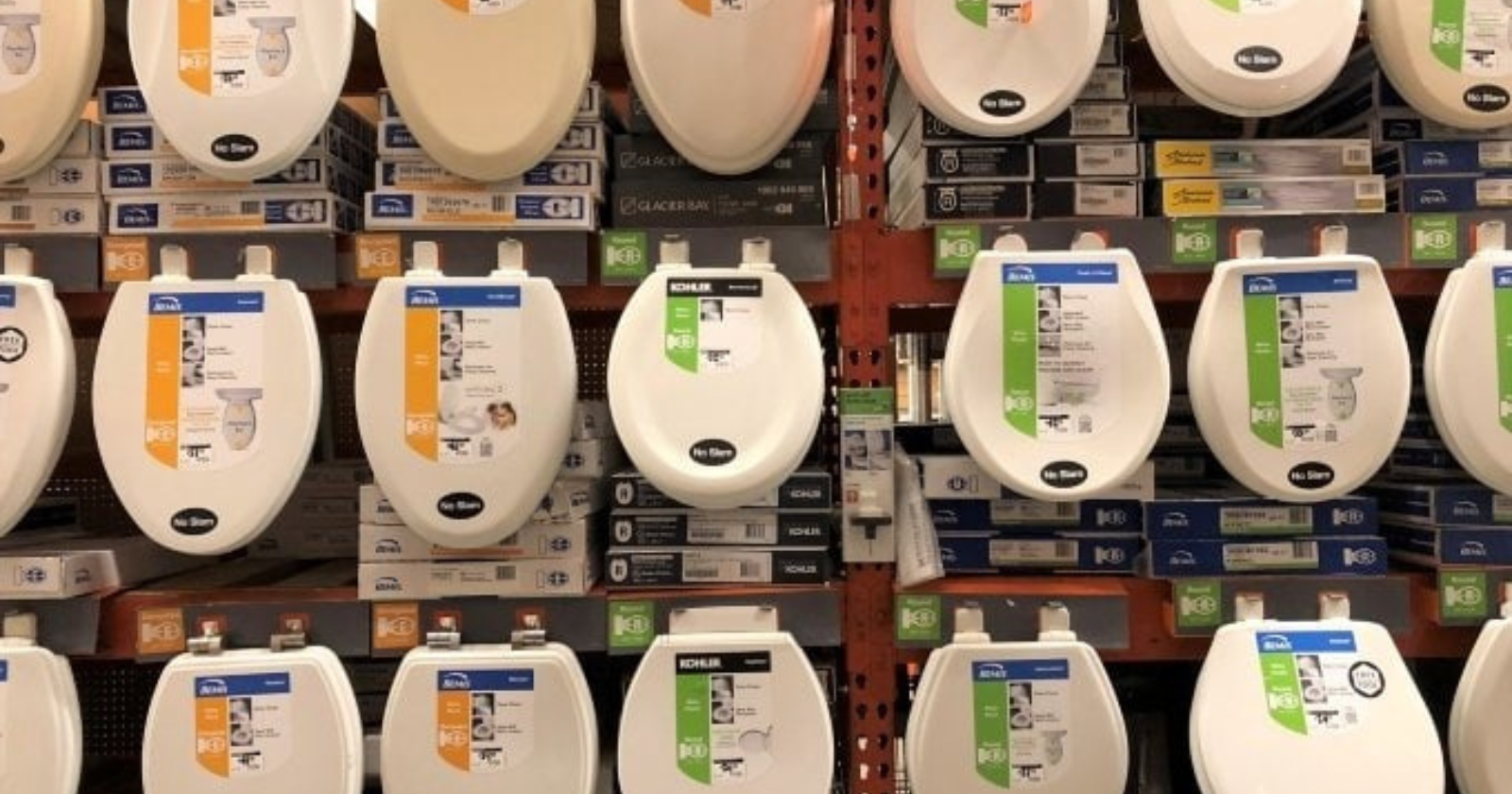
Have you ever wondered Whether toilet seats are antimicrobial? It’s a question that might pop into your head when you’re about to sit down on a public restroom throne. Are these seats designed to fend off the armies of germs, or are we left to fight the microscopic battles ourselves?
In this post, we’ll explore the world of antimicrobial toilet seats, separating fact from fiction with a splash of humor. So, let’s dive in and see if our trusty toilet seats are secret superheroes in disguise!

So, Are Toilet Seats Antimicrobial?
Yes, some toilet seats are indeed antimicrobial! These seats are designed with special materials and coatings that inhibit the growth of bacteria, mold, and other microbes.
The antimicrobial properties help maintain a cleaner surface and reduce the spread of germs, making them a popular choice for both public restrooms and home use.
While no toilet seat can be 100% germ-free, antimicrobial seats offer an extra layer of protection, giving you peace of mind and a bit more hygiene where it counts.
So next time you sit down, you can feel a little more at ease knowing your throne might be fighting the good fight against unwanted microbes. So, are toilet seats antimicrobial? The answer is a resounding yes for those designed with this feature in mind!
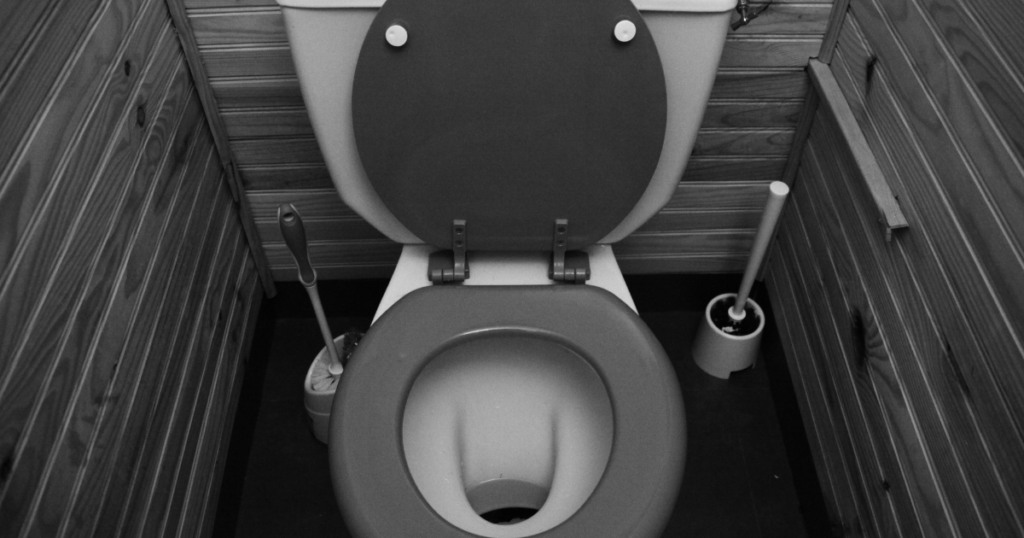
Antimicrobial Properties of Toilet Seats
Are Toilet Seats Antimicrobial? Toilet seats with antimicrobial properties use special materials and treatments to reduce the presence of bacteria, germs, mold, and mildew.
Definition and Function of Antimicrobial Materials
Antimicrobial materials are designed to prevent harmful microorganisms like bacteria and germs from growing and spreading.
For toilet seats, these materials might include resins like Supralit®, which use special treatments to kill microbes and prevent the buildup of impurities. The low porosity of these materials means less room for bacteria and mold to grow.
Antimicrobial coatings or additives can also be applied during manufacturing to enhance hygiene.
The Science Behind Antimicrobial Effects on Bacteria, Germs, Mold, and Mildew
Antimicrobial materials disrupt the growth and survival of bacteria, germs, mold, and mildew.
These materials might release ions like silver or copper, which are toxic to microbes. Others create surfaces where microorganisms find it hard to survive.
In practice, toilet seats made from antimicrobial materials are less likely to harbor bacteria and germs.
This makes cleaning easier and helps keep bathrooms more hygienic. In addition, these materials are often resistant to stains and scratches, prolonging the life of the toilet seat.
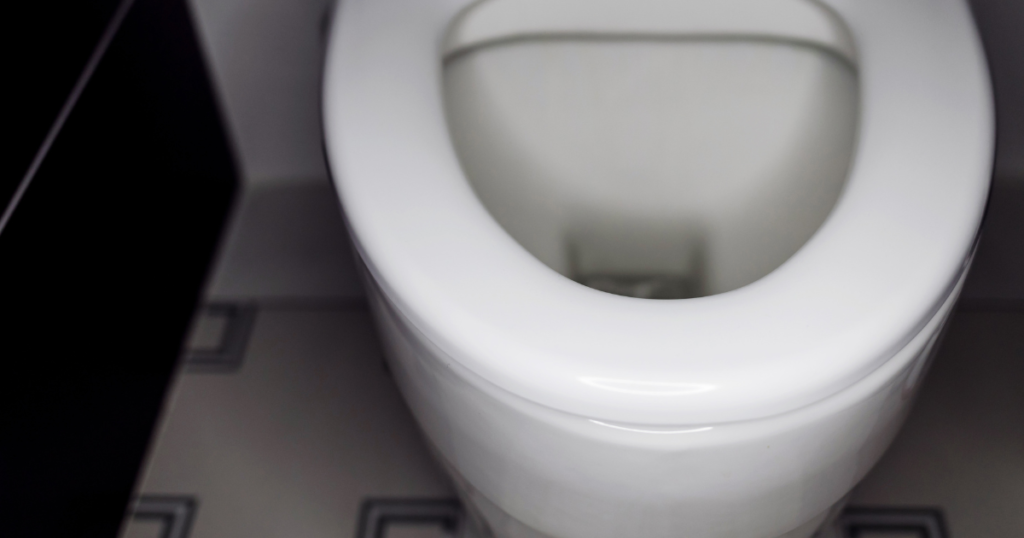
Types and Features of Antimicrobial Toilet Seats
Antimicrobial toilet seats are designed to reduce bacteria and other microbes on the surface. They come in various materials and offer features that improve hygiene and functionality. Below, I discuss the materials used, notable brands, and unique features.
Materials Used in Antimicrobial Seats
Most antimicrobial toilet seats are made from plastic or wood and treated with agents like zinc pyrithione. Zinc pyrithione is effective against bacteria, fungi, and algae.
Plastic seats are popular due to their durability and ease of cleaning. Wood seats, on the other hand, offer a warmer feel but still have antimicrobial properties when properly treated. Both materials ensure a cleaner sitting surface.
Notable Brands and Products
Bemis and Mayfair by Bemis are well-known brands in the antimicrobial toilet seat market. DuraGuard by Bemis integrates antimicrobial protection directly into the seat material. This feature helps inhibit the growth of gram-positive and gram-negative bacteria.
Kohler offers the Cachet Elongated Antimicrobial Seat, which combines style and hygiene. These brands provide reliable products that ensure both comfort and cleanliness.
Unique Features of Antimicrobial Seats
Many antimicrobial toilet seats have additional features. Quick-release hinges make it easy to remove the seat for thorough cleaning, and grip-tight bumpers keep the seat firmly in place, preventing shifting during use.
Some seats include a soft-close lid, which gently closes to avoid slamming. Advanced models even offer a heated seat for added comfort and self-cleaning options to effortlessly maintain hygiene.
These features enhance the overall user experience and ensure the seats remain clean and functional over time.
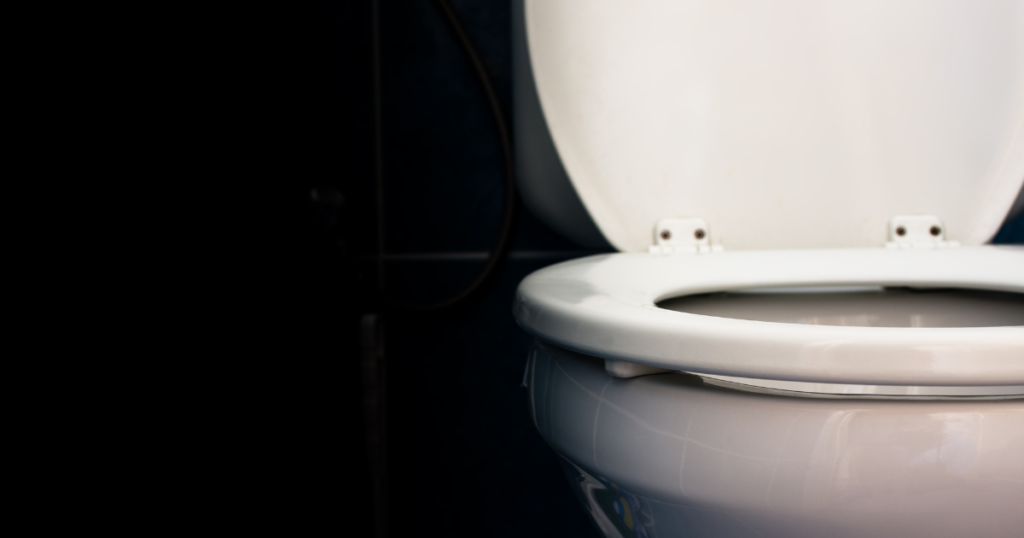
Installation and Maintenance of Antimicrobial Toilet Seats
Installing and maintaining antimicrobial toilet seats is a straightforward process that can enhance both hygiene and convenience. Proper installation ensures durability and noise-free use, while regular cleaning maintains its antibacterial properties.
Step-by-Step Installation Guide
First, gather your tools. You’ll need a Phillips screwdriver.
- Remove the Old Seat: Locate the bolts holding the old seat. Unscrew them and remove the seat.
- Prepare the New Seat: Check if the new seat has all the components. Align it with the toilet bowl’s bolt holes.
- Secure the Seat: Insert the new bolts and screw them tightly with your Phillips screwdriver.
- Adjustments: Ensure the seat is level and adjust as necessary.
This process usually takes about 20 minutes.
Tips for Cleaning and Maintenance
Antimicrobial toilet seats are easy to clean. Follow these tips for the best results:
- Regular Cleaning: Use a mild soap and warm water. Avoid bleach or harsh chemicals.
- Dry Thoroughly: After cleaning, dry the seat to prevent water stains.
- Check for Wear: Periodically inspect the seat for any wear or damage.
- Noise-Free Use: Ensure bolts remain tight to avoid any wobbling or noise.
These practices help in maintaining the seat’s antibacterial properties and durability.
Selecting the Right Antimicrobial Toilet Seat
Choosing the right antimicrobial toilet seat involves considering its shape and size and comparing the prices and value of different options. Each aspect is essential to ensure comfort, fit, and worth.
Considering Shape and Size
When selecting an antimicrobial toilet seat, it’s important to look at the shape of your toilet. There are generally two shapes: elongated and round. An elongated toilet seat is longer and provides more comfort, while a round toilet seat is more compact and fits smaller bathrooms.
Before purchasing, measure your toilet bowl to determine its shape and size. This ensures the seat will fit correctly. Most products are designed to fit standard shapes, but some unique designs might need specific measurements.
Look for antimicrobial toilet seats that fit securely without shifting. This stability adds to both comfort and hygiene. Materials like plastic and wood are most common, but some high-end seats feature integrated antimicrobial agents that effectively reduce bacteria growth.
Comparing Prices and Value
Antimicrobial toilet seats are available at a range of prices. Budget-friendly options, like the Mayfair by Bemis Cameron Round Toilet Seat, offer good basic features without breaking the bank.
On the other hand, pricier models, such as the KOHLER Cachet Elongated Antimicrobial Soft Close Toilet Seat, include advanced features like soft-close lids and enhanced durability. These can be valuable in a high-use bathroom.
When comparing prices, consider what features are most important to you. Higher prices don’t always mean better quality, but investing in well-reviewed products often provides better value. Look for benefits like durability, ease of cleaning, and added comfort.
Top 3 Antimicrobial Toilet Seats
Where to Buy Antimicrobial Toilet Seats
You can find antimicrobial toilet seats at stores like Home Depot and Lowe’s, both online and in local stores. Home Depot offers multiple options, including brands like Cadet and KOHLER. Prices start around $37.98, but inventory levels can’t always be guaranteed.
Lowe’s also stocks these seats and may have different promotions and styles. They mention that prices and availability can change without notice, so it’s good to check frequently.
Amazon lists popular choices such as Clorox and KOHLER, with prices starting as low as $25.48. The availability and fast shipping options can make buying through Amazon convenient.
Remember that local store prices might differ when buying online. Always compare several platforms to find the best deal. Additionally, some websites may be difficult for screen reader users to navigate, so take extra care if this applies.

Wrapping Up
When asking the question, Are toilet seats antimicrobial? The answer can indeed be a reassuring yes for many modern designs. These seats bring an added level of cleanliness and peace of mind to your daily routine.
While not every toilet seat boasts these germ-fighting properties, investing in an antimicrobial seat can make a significant difference in maintaining hygiene.
So, next time you shop for a new toilet seat, consider one with antimicrobial features for that extra layer of protection. After all, who wouldn’t want their throne to be a little more invincible? Because, let’s face it, everyone deserves a superhero seat in their bathroom!
Frequently Asked Questions
Antimicrobial toilet seats are popular because they can reduce harmful bacteria and germs. Here’s some important info about how they work and when to replace them.
How do antimicrobial toilet seats work?
Antimicrobial toilet seats have an agent built into the plastic that fights against bacteria, mold, and mildew. These agents disrupt the growth and reproduction of microorganisms, keeping the seat cleaner for longer periods.
How often should you replace an antimicrobial toilet seat so it remains effective?
It’s recommended to replace an antimicrobial toilet seat every couple of years. Time, regular use, and cleaning can wear down the antimicrobial agents.
Regular replacement ensures that the seat continues to inhibit bacterial growth effectively.
Dive Deeper
- Kohler Quick Release Toilet Seat
- The Throne Zone: The Best Toilet Seat Surface for Cleaning
- Kohler Heated Toilet Seat Review

